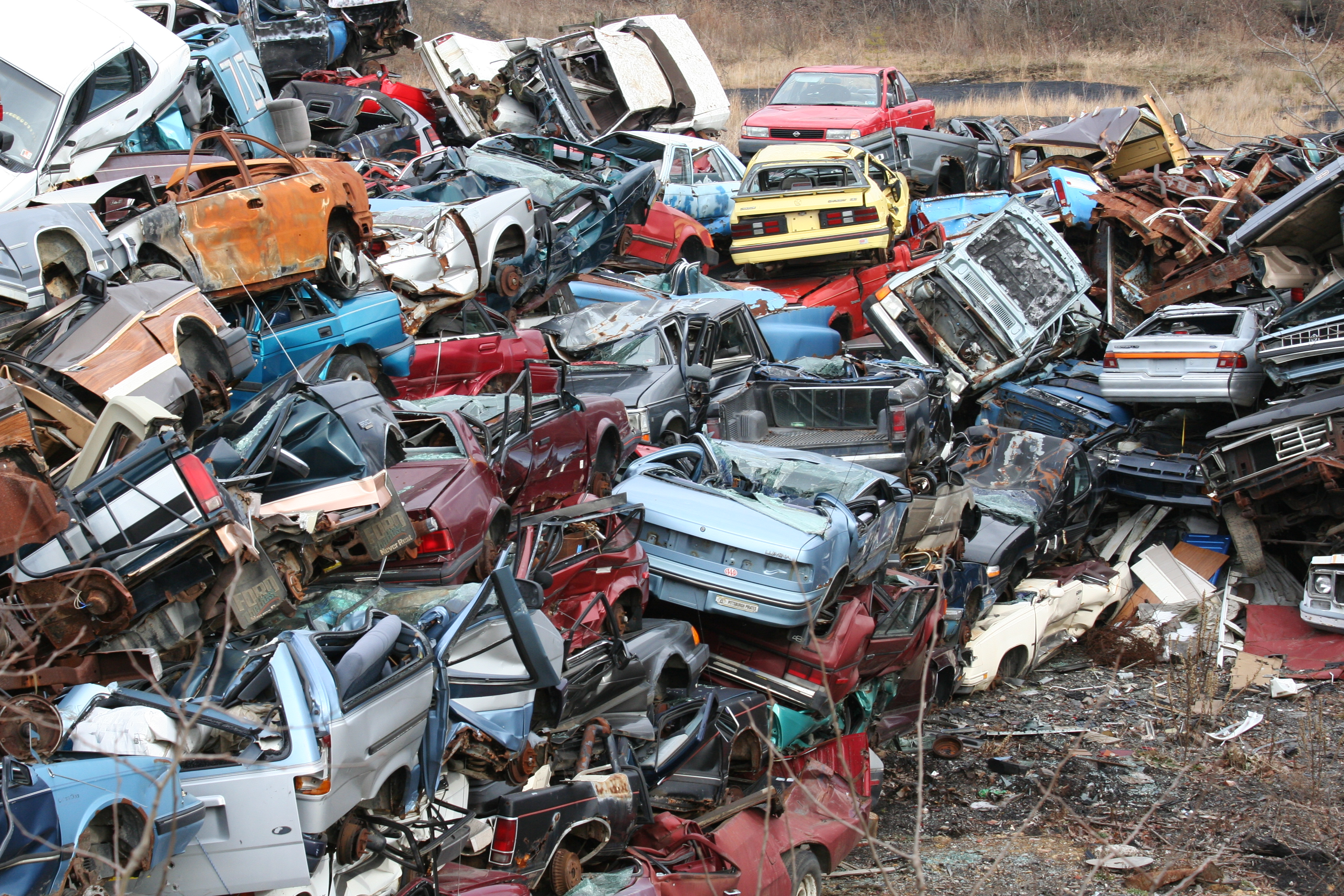Title: The Lifecycle of a Scrap Car: Transforming Waste into Reusable Resources
Introduction:
In an era characterized by increasing environmental concerns, the need for sustainable waste management and resource conservation has become paramount. A key component of this endeavor is the recycling of end-of-life vehicles, commonly known as scrap cars. Through a complex and innovative process, these discarded automobiles are rendered into valuable reusable materials, minimizing their impact on the environment and contributing to the circular economy.
In this informative article, we delve into the lifecycle of a scrap car, uncovering the intricacies of its transformation from a discarded wreck into valuable reusable resources. From the initial vehicle acquisition to the final recycling stage, we explore the sustainable practices that enable the salvage industry to thrive while mitigating environmental harm.
At the forefront of this salvage industry, lies companies like “Top Cash For Cars.” Our holistic approach to scrap car recycling aligns with the principles of sustainability and responsible waste management. However, it is crucial to note that the following exploration focuses on the general processes involved in the lifecycle of a scrap car, applicable to the industry as a whole.
With an emphasis on professionalism, we shed light on the significant stages that characterize the lifespan of a scrap car. Readers will obtain a comprehensive understanding of how recycling facilities dismantle, extract, and refine various materials found in these vehicles while adhering to rigorous environmental regulations.
By exploring the intricate journey of a scrap car, this article intends to emphasize the broader significance of the recycling process. Recognizing that a single vehicle’s recycling translates into substantial resource recovery and waste reduction, it becomes clear that achieving sustainability requires collective efforts from all stakeholders involved.
As we embark on this educational voyage, we invite you to join us on a factual and insightful expedition into the lifecycle of a scrap car. Discover the remarkable methods employed to salvage reusable materials, minimize waste, and ultimately contribute to a greener and more sustainable future.
Disclaimer: This article serves as an informative guide and does not promote or endorse any specific company, including “Top Cash For Cars.” The intention is to shed light on the general process involved in the recycling and resource recovery of scrap cars.
Table of Contents
- Scrap Car Disposal: An Overview of the Lifecycle and Environmental Impact
- Efficient Scrap Car Recycling: Turning Waste into Valuable Reusable Resources
- Strategies for Sustainable Scrap Car Management: Minimizing Environmental Footprint
- Recommendations for Responsible Scrap Car Processing: Prioritizing Recycling and Circular Economy
- Key Takeaways

Scrap Car Disposal: An Overview of the Lifecycle and Environmental Impact
When it comes to scrap car disposal, understanding the lifecycle and environmental impact is crucial. Every step involved in this process plays a significant role in transforming waste into reusable resources, minimizing the negative consequences on the planet. From the moment a vehicle becomes inoperable, to its final destination, here’s an overview of the journey a scrap car undertakes:
The Dismantling Stage:
The first step in the lifecycle of a scrap car is dismantling. Skilled technicians extract useful parts and components that can be resold or reused, including the engine, transmission, electrical systems, and more. By salvaging these parts, not only are valuable resources given a second life, but it also reduces the need for new parts to be manufactured, thereby curbing the demand for raw materials.
Additionally, fluids such as gasoline, engine oil, and coolant are carefully drained, ensuring they are properly disposed of or recycled. This process prevents harmful substances from contaminating the environment and keeps them from seeping into the soil and groundwater.
The Recycling Stage:
Once the valuable parts have been salvaged, the next stage is recycling. The remaining vehicle shell is crushed or shredded into smaller pieces. The shredding process separates the different materials present, such as metal, plastic, rubber, and glass. These materials are then transported to specialized recycling facilities.
At these facilities, the separated materials undergo further processing. Steel is melted down and transformed into new products like appliances or construction materials. Plastics can be repurposed into various items, including car parts. Rubber can be turned into playground surfaces, while glass is recycled and used in bottles, insulation, or pavement. Through this rigorous recycling process, valuable resources are not only saved from ending up in landfills but are also given the opportunity to be used again, reducing the need for raw production and minimizing environmental impact.

Efficient Scrap Car Recycling: Turning Waste into Valuable Reusable Resources
When a car reaches the end of its life, it may seem like nothing more than a useless piece of scrap. However, with the right recycling processes, even a scrap car can be transformed into valuable reusable resources. The lifecycle of a scrap car involves several stages, each aimed at maximizing the recovery of materials and minimizing waste.
First, the scrap car is carefully dismantled by skilled technicians. This process involves removing all fluids and hazardous substances, such as fuel, oil, and coolant. These liquids are collected and treated separately to prevent any harm to the environment. Next, the car is systematically disassembled, with parts and components sorted and categorized. Any reusable parts, such as engines, transmissions, and tires, are extracted for refurbishment and resale. This not only prolongs their lifespan but also reduces the demand for new parts, contributing to a more sustainable automotive industry.

Strategies for Sustainable Scrap Car Management: Minimizing Environmental Footprint
One of the key strategies for managing scrap cars in a sustainable manner is to minimize their environmental footprint. By implementing effective practices throughout the lifecycle of a scrap car, we can transform waste into reusable resources and significantly reduce the negative environmental impacts associated with car disposal. Here are some strategies that can be employed:
- Recycling: One of the most important steps in sustainable scrap car management is the proper recycling of materials. Materials such as steel, aluminum, and glass can be extracted during the initial dismantling process and sent for recycling. This not only reduces the need for mining raw materials but also saves energy and reduces greenhouse gas emissions.
- Reusing Components: Many components of a scrap car can be salvaged and reused in other vehicles. By identifying and removing these reusable parts, we can extend their lifespan and minimize the need for manufacturing new components. This not only saves resources but also reduces the energy and emissions associated with production processes.

Recommendations for Responsible Scrap Car Processing: Prioritizing Recycling and Circular Economy
Scrap car processing plays a crucial role in reducing the environmental impact of end-of-life vehicles and promoting sustainable practices. To prioritize recycling and harness the potential of the circular economy, here are some recommendations to effectively manage the lifecycle of a scrap car:
-
Collaborate with Certified Recycling Facilities: When choosing a scrap car processor, opt for facilities that are certified by environmental agencies. These facilities have the expertise and infrastructure to safely dismantle and recycle vehicles, ensuring maximum resource recovery. Look for certifications such as Responsible Recycling (R2) or ISO 14001, which guarantee adherence to stringent environmental standards.
-
Implement Parts Reuse Programs: Salvaging and reusing car parts significantly reduces the need for new manufacturing and conserves valuable resources. Establish partnerships with local mechanics, repair shops, and automobile enthusiasts to facilitate the exchange of salvaged parts. By creating a network that enables the reuse of functional components such as engines, transmissions, and electronics, we can minimize waste and extend the lifespan of automotive parts.
-
Promote Battery Recycling: As the popularity of electric vehicles continues to grow, the responsible management of their batteries becomes crucial. Collaborate with battery manufacturers and recycling centers to establish efficient systems for collecting and recycling used EV batteries. By extracting valuable metals and properly disposing of hazardous materials, we can mitigate the environmental impact while supporting the development of sustainable battery technologies.
-
Educate Car Owners on Recycling Options: Many car owners are unaware of the recycling possibilities available for their scrap vehicles. Implement awareness campaigns highlighting the ecological benefits of responsible scrap car processing. Provide information on local recycling facilities, collection points, and drop-off locations. Encourage the inclusion of recycling information in vehicle documentation to ensure that car owners are well-informed about the correct disposal options and incentivize responsible practices.
By prioritizing recycling and embracing the principles of the circular economy, we can transform the lifecycle of scrap cars from a wasteful process into one that maximizes resource recovery and minimizes environmental impact. Together, let’s take the initiative to create a sustainable and responsible future for the automotive industry.
Key Takeaways
In conclusion, understanding the lifecycle of a scrap car provides valuable insights into the transformative potential of waste. From the moment a vehicle reaches the end of its roadworthy life, it embarks on a journey of renewal. Through rigorous dismantling and recycling processes, numerous reusable resources are salvaged, reducing the strain on our environment and conserving precious materials.
At Top Cash For Cars, we are committed to facilitating this sustainable transformation. Our industry expertise, state-of-the-art facilities, and dedicated team ensure that every scrap car is handled with utmost care and efficiency. With our seamless process, you can effortlessly convert your old, unwanted vehicle into cash while actively contributing to the circular economy.
Why wait? Take the first step in transforming your scrap car into a valuable resource. Request a quote today by filling out our convenient “Request a Quote” form or simply give us a call. Our friendly representatives are standing by to provide you with a competitive offer and exceptional service.
Join us in our mission to create a greener future, one scrap car at a time. Choose Top Cash For Cars – where waste becomes opportunity.
